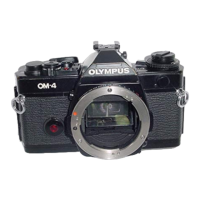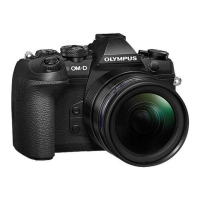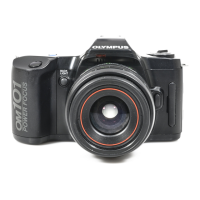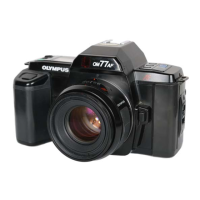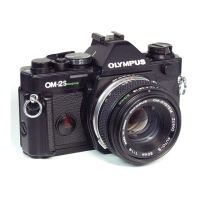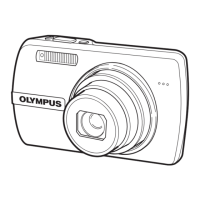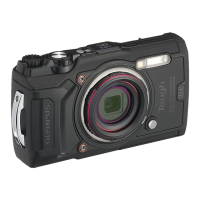59
EN
Shooting
2
Recording Movies
# When recording movies, use an SD card that supports an SD speed class of 10 or higher.
# A UHS-II or UHS-I card with a UHS speed class of 3 or better is required when:
a movie resolution of [4K] or [C4K] is selected in the [nK] menu or a Motion
Compensation of [A-I] (All-Intra) is selected in the [nK] menu
Recording movies in movie mode (n)
PASMB
n
Rotate the mode dial to n (movie mode) to record movies using the eects available
in P, A, S, and M modes (P. 60).
1
Rotate the mode dial to n.
2
Press the R button to begin recording.
• A beep does not sound when the camera focuses in
movie mode.
• Movie you are recording will be displayed on the
monitor.
• If you put your eye to the viewnder, movie you are recording will be displayed in the
viewnder.
• A red frame is displayed during movie recording (P. 185).
• You can change the focus location by tapping the screen while recording.
• The camera will start the recording count and display the recording time.
3
Press the R button again to end recording.
# When the camera is used continuously for extended periods, the temperature of the
image sensor will rise and noise and color splotches may be visible in the display.
Should this occur, turn the camera o and wait for it to cool. Noise and color splotches
are particularly likely to occur at high ISO sensitivities. If the temperature of the sensor
increases further, the camera will turn o automatically.
# When using a Four Thirds system lens, the AF will not operate while recording movies.
# When high-speed movie recording is selected for [nK], movies shot with [i-Enhance] or
an art lter selected for picture mode will be recorded in [Natural] mode.
# The sound of touch operations and button operations may be recorded.
# CMOS image sensors of the type used in the camera generate a so-called “rolling
shutter” eect that can cause distortion in pictures of moving objects. This distortion is
a phenomenon that occurs in pictures of fast-moving subjects or if the camera is moved
during shooting. It is particularly noticeable in pictures taken at long focal lengths.
# When an SDXC card is used, movies up to 3 hours long can be recorded. Movies over 3
hours are recorded over multiple les (depending on shooting conditions, the camera may
start recording to a new le before the 3-hour limit is reached).
# When an SD/SDHC card is used, movies over 4 GB in size are recorded over multiple
les (depending on shooting conditions, the camera may start recording to a new le
before the 4 GB limit is reached).
%You can also begin recording movies by pressing the shutter button. g “Recording a
movie by pressing the shutter button (nShutter Function)” (P. 216)
%Divided movie les can be played back as a single movie. g “Playing back separated
movies” (P. 189)
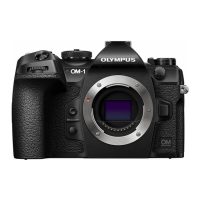
